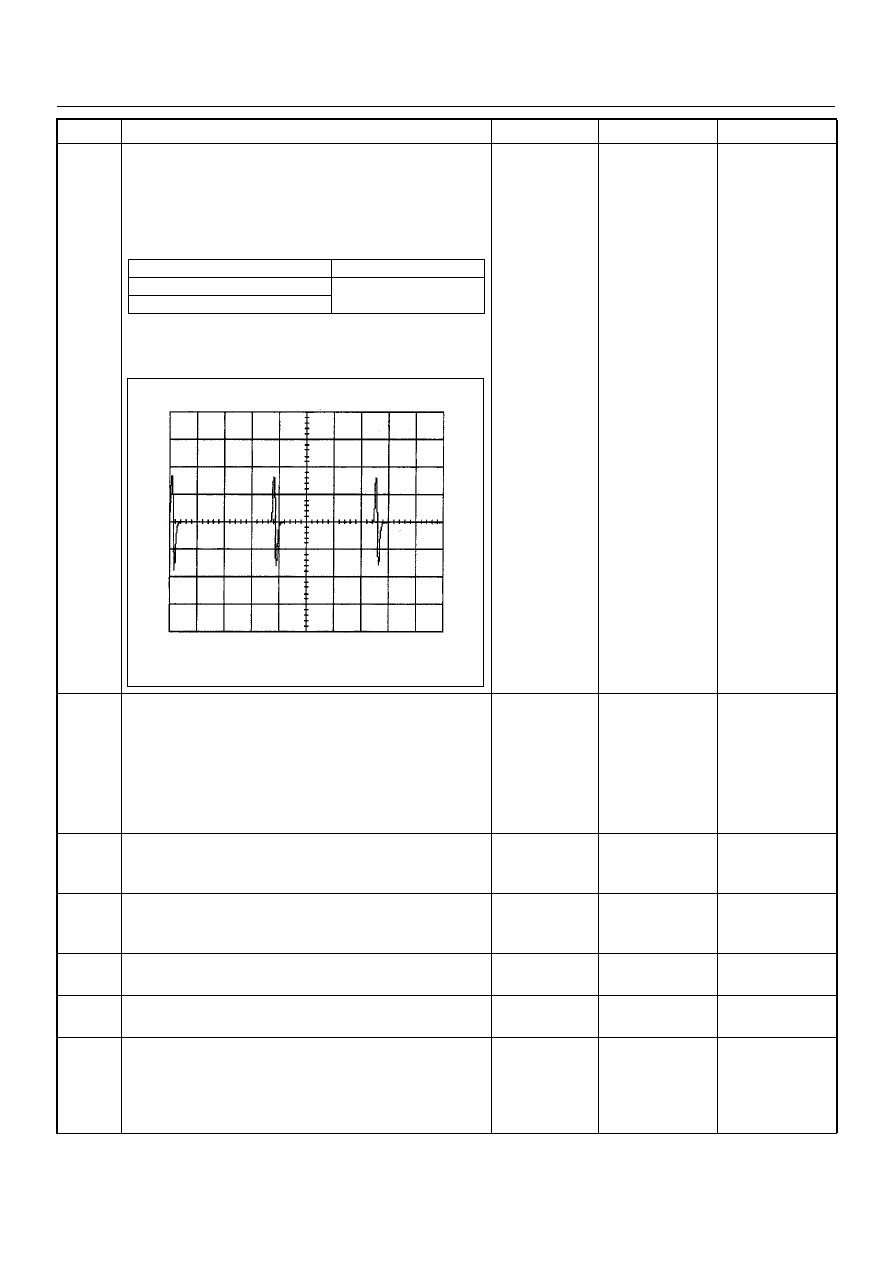Isuzu D-Max / Isuzu Rodeo (TFR/TFS). Manual - part 138

6E–156
4JH1 ENGINE DRIVEABILITY AND EMISSIONS
6
Using the DVM and check the CKP sensor signal.
1. Ignition “On”, engine “On”.
2. Measure the CKP output voltage at the sensor
and ECM.
Does the tester indicate standard voltage?
If a oscilloscope is available, monitor the CKP sensor
signal. Does the oscilloscope indicate correct wave
form?
Go to Step 9
Go to Step 7
7
Remove the CKP sensor from the flywheel housing
and visually check.
Check for the following conditions.
• Objects sticking the CKP sensor.
• Objects sticking the CKP sensor pulser.
If a problem is found, repair as necessary.
Was the problem found?
—
Verify repair
Go to Step 8
8
Check the CKP sensor shield wire for open or short
circuit.
Was the problem found?
—
Repair faulty
harness and
verify repair
Go to Step 9
9
Check any accessory parts which may cause electric
interference or magnetic interference.
Was the problem found?
—
Remove the
accessory parts
and verify repair
Go to Step 10
10
Substitute a known good CKP sensor and recheck.
Was the problem solved?
—
Go to Step 11
Go to Step 12
11
Replace the CKP sensor.
Was the problem solved?
—
Verify repair
Go to Step 12
12
Is the ECM programmed with the latest software
release?
If not, download the latest software to the ECM using
the “SPS (Service Programming System)”.
Was the problem solved?
—
Verify repair
Go to Step 13
Step
Action
Value(s)
Yes
No
Measurement Point
Voltage (V) (AC Range)
At CKP sensor terminal 2 & 1
Approximately 1.0 V at
2000rpm
At ECM C57 connector 90 & 98
CKP Sensor Reference Wave Form
0V
→
Measurement Terminal: 90 (+) 98(-)
Measurement Scale: 20V/div
2.0ms/div
Measurement Condition: Engine speed at 2000rpm